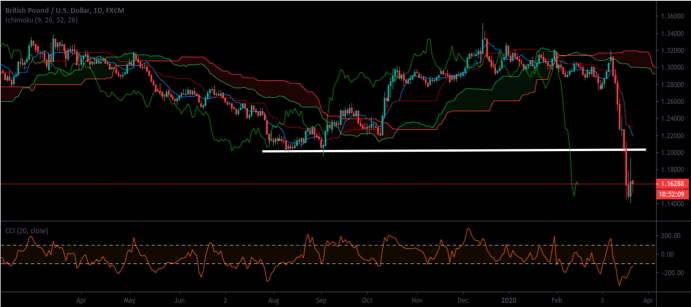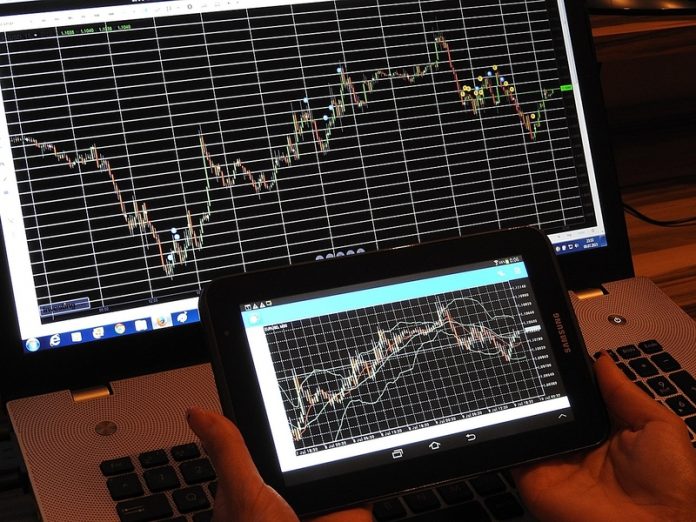By Richard Cox
Global markets are under siege, and bearish investors seem ready to be relentless in their selling pressure. But since these moves have stretched far beyond levels that would typically be thought of as being “oversold” or “over-extended” it has also become more difficult to simply short the market and expect continued profits. Currency markets have been no exception to these broader trends and many traders are now looking for ways to position for an upside reversal in the British pound versus the U.S. dollar (GBP/USD). Other popular foreign exchange pairs have experienced similar moves, however, very clear psychological levels have become visible in GBP/USD and traders can use these areas as key pivot zones when structuring trades over the next few months.
Specifically, the psychological support level at 1.20 was not able to contain market bears and the previous violation of this price zone suggests that the outlook will remain negative as long as the pair trades below this level. Going forward, it looks like near-term policy responses from European banks could turn out to be the determining factor when assessing the next likely price trend trajectory. In other words, the market’s next policy response could be related to new stimulus plan proposals and the way these proposals are structured could be what determines whether pound-sterling is able to break above the critical support level we have defined near 1.20 versus the U.S. dollar (which is equal to 1.11 euros).

At this stage, it is likely that the market has completed a series of knee-jerk reactions that have centered around the greenback as the foreign exchange market’s “default” safe haven currency asset. However, once market conditions begin to normalize, these trends are unlikely to continue. Once market participants are able to see past recent volatility scares, the relative strength of the British economy should become more obvious. When compared to regional stories like those occurring in Switzerland and in the eurozone, the British economy has shown much more resiliency over the last several quarters and this is likely to continue once we begin to see the aftermath of the coronavirus. For these reasons, eventual moves in currency pairs like GBP/CHF and EUR/GBP might actually see more volatility once markets normalize.
Of course, this might be due to the fact that the U.S. dollar and the British pound could both be viewed as safe-haven assets, while it is highly unlikely that this will turn out to be the case for the euro. From an active trader’s perspective, technical analysis strategies that are focused on pivot point trading techniques we have outlined previously could see additional follow-through in the event certain price levels are broken in the major forex pairs. Traditional safe-haven associations with the Swiss franc might also break down, given the current interest rate picture that has been outlined by the Swiss National Bank (SNB). This is precisely why a surge in upside for cable is most likely to be found in currency pairs like the GBP/CHF or in EUR/GBP when we are looking at likely trend projections for the next several weeks.
About the Author
 Richard Cox is an active investor with more than two decades of experience in the financial markets. He is a syndicated writer, with works appearing on CNBC, NASDAQ, Economy Watch, Motley Fool, and Wired Magazine. Market commentaries implement advanced technical analysis techniques to trade macroeconomic trends in foreign exchange, global index benchmarks, options, and the entire precious metals complex. Follow his investment commentaries at https://AskTraders.com.
Richard Cox is an active investor with more than two decades of experience in the financial markets. He is a syndicated writer, with works appearing on CNBC, NASDAQ, Economy Watch, Motley Fool, and Wired Magazine. Market commentaries implement advanced technical analysis techniques to trade macroeconomic trends in foreign exchange, global index benchmarks, options, and the entire precious metals complex. Follow his investment commentaries at https://AskTraders.com.




































